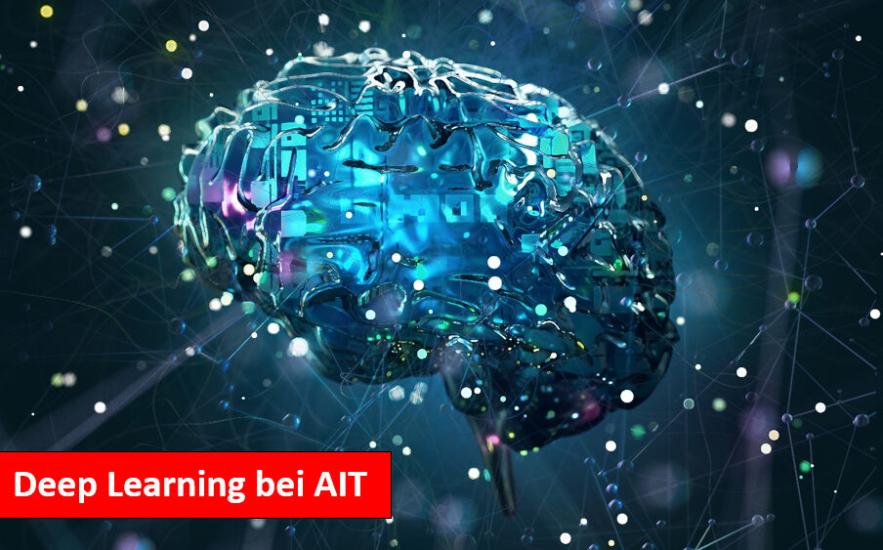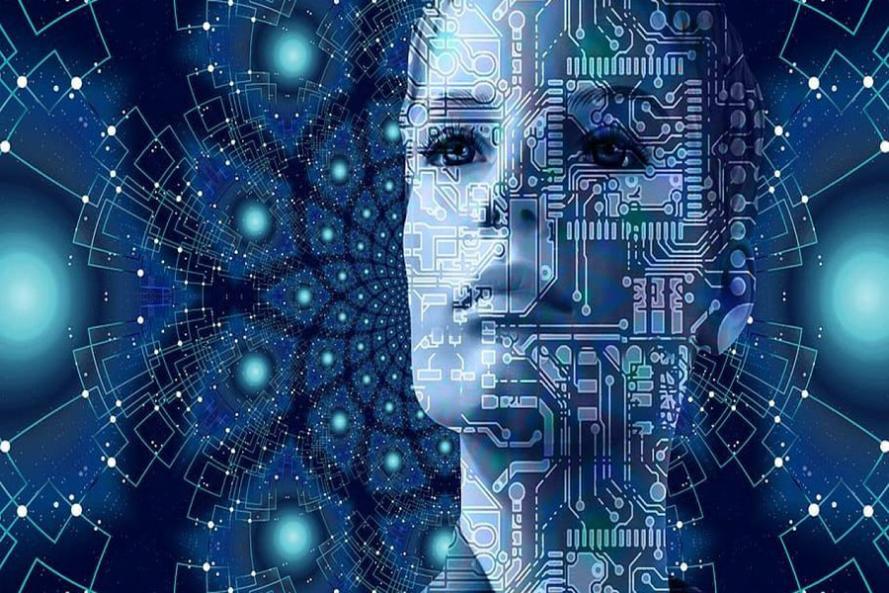What Are the Potential Applications of AI Deep Learning in the Field of Robotics?
The convergence of AI deep learning and robotics has opened up a world of possibilities for the future of automation and intelligent machines. This article explores the potential applications of AI deep learning in robotics, highlighting its transformative impact across various industries and domains.

I. AI Deep Learning Techniques In Robotics
AI deep learning, a subset of machine learning, enables computers to learn from data without explicit programming. This capability has revolutionized robotics, allowing robots to perform complex tasks with greater autonomy and adaptability.
Supervised Learning:
- Image Recognition for Object Manipulation: Deep learning algorithms can be trained to recognize and manipulate objects, enabling robots to perform tasks such as picking and placing items or assembling products.
- Speech Recognition for Voice-Controlled Robots: Deep learning models can be trained to understand human speech, allowing robots to respond to voice commands and interact naturally with humans.
Unsupervised Learning:
- Anomaly Detection for Robot Fault Diagnosis: Deep learning algorithms can be trained to identify anomalies in robot behavior, enabling early detection of faults and preventing breakdowns.
Reinforcement Learning:
- Robot Navigation and Path Planning: Deep reinforcement learning algorithms can enable robots to learn optimal navigation strategies in complex environments, improving their efficiency and safety.
- Robot Manipulation and Control: Deep reinforcement learning can also be used to train robots to perform complex manipulation tasks, such as grasping and moving objects with precision.
II. Applications In Industrial Robotics
AI deep learning is transforming industrial robotics, leading to increased productivity, efficiency, and safety in manufacturing and logistics.
Automated Assembly Lines:
- Improved Efficiency and Accuracy: Deep learning algorithms can optimize robot movements and coordination, resulting in faster and more accurate assembly processes.
- Reduced Labor Costs: Robots equipped with deep learning capabilities can perform repetitive and dangerous tasks, reducing the need for human labor and lowering production costs.
Quality Control:
- Real-Time Defect Detection: Deep learning models can be trained to detect defects in products during the manufacturing process, ensuring high-quality output.
- Predictive Maintenance: Deep learning algorithms can analyze sensor data to predict potential equipment failures, enabling proactive maintenance and preventing costly breakdowns.
Collaborative Robots:
- Safe Human-Robot Interaction: Deep learning can enhance the safety of collaborative robots by enabling them to recognize and respond to human presence, preventing accidents.
- Enhanced Productivity: Collaborative robots equipped with deep learning capabilities can work alongside human workers, increasing productivity and efficiency.
III. Applications In Healthcare Robotics
AI deep learning is also revolutionizing healthcare robotics, leading to more precise surgeries, personalized rehabilitation, and improved patient care.
Surgical Robots:
- Enhanced Precision and Accuracy: Deep learning algorithms can assist surgeons in planning and executing complex surgical procedures with greater precision and accuracy, reducing risks and improving patient outcomes.
- Minimally Invasive Procedures: Deep learning-enabled surgical robots can perform minimally invasive procedures, reducing patient discomfort and recovery time.
Rehabilitation Robots:
- Personalized Therapy Plans: Deep learning algorithms can analyze patient data to create personalized rehabilitation plans, optimizing the recovery process.
- Improved Patient Outcomes: Deep learning-powered rehabilitation robots can provide targeted and adaptive therapy, leading to improved patient outcomes and faster recovery.
Assistive Robots:
- Assistance to Elderly and Disabled Individuals: Deep learning-enabled assistive robots can provide assistance to elderly and disabled individuals, helping them with daily tasks and improving their quality of life.
- Enhanced Quality of Life: Assistive robots can enhance the quality of life for individuals with disabilities by providing them with greater independence and mobility.
IV. Applications In Space Exploration

AI deep learning is also playing a crucial role in space exploration, enabling autonomous navigation, sample collection, and satellite servicing.
Autonomous Rovers:
- Navigation and Terrain Mapping: Deep learning algorithms can enable autonomous rovers to navigate complex and unknown terrains, creating detailed maps of planetary surfaces.
- Sample Collection and Analysis: Deep learning models can be trained to identify and collect samples of interest, assisting scientists in studying extraterrestrial environments.
Satellite Servicing:
- Inspection and Repair of Satellites: Deep learning algorithms can be used to inspect satellites for damage and perform repairs, extending their lifespan and reducing the need for costly replacements.
- Extension of Satellite Lifespan: Deep learning-enabled satellite servicing missions can extend the lifespan of satellites, saving costs and ensuring continuity of critical services.
V. Applications In Military And Defense
AI deep learning is also finding applications in military and defense, enhancing surveillance, reconnaissance, and combat capabilities.
Unmanned Aerial Vehicles (UAVs):
- Surveillance and Reconnaissance: Deep learning algorithms can be used to analyze aerial imagery and video footage, providing real-time intelligence and situational awareness.
- Target Identification and Tracking: Deep learning models can be trained to identify and track targets, enabling precise targeting and engagement.
Autonomous Ground Vehicles (AGVs):
- Logistics and Transportation: Deep learning-enabled AGVs can be used for logistics and transportation tasks, reducing the risk to human personnel and improving efficiency.
- Combat Support: AGVs can provide combat support by transporting supplies, evacuating casualties, and conducting reconnaissance missions.
VI. Applications In Consumer Robotics

AI deep learning is also making its way into consumer robotics, leading to the development of intelligent domestic robots, entertainment robots, and educational robots.
Domestic Robots:
- Household Tasks Automation: Deep learning-enabled domestic robots can automate household tasks such as cleaning, vacuuming, and laundry, freeing up time for other activities.
- Personal Assistance: Domestic robots can also provide personal assistance, such as reminding users of appointments, playing music, and controlling smart home devices.
Entertainment Robots:
- Interactive Toys and Games: Deep learning algorithms can be used to create interactive toys and games that respond to user input and provide engaging experiences.
- Educational Robots: Deep learning-powered educational robots can provide personalized learning experiences, adapting to the individual needs and learning styles of students.
VII. Challenges And Future Directions
While AI deep learning holds immense promise for robotics, there are still challenges that need to be addressed for its widespread adoption.
- Data Collection and Labeling: Acquiring and labeling large amounts of high-quality data is crucial for training deep learning models. However, this process can be time-consuming and expensive.
- Ethical and Safety Considerations: The use of AI deep learning in robotics raises ethical and safety concerns, such as the potential for job displacement, bias in decision-making, and the need for robust safety measures to prevent accidents.
- Integration of AI Deep Learning with Other Technologies: Integrating AI deep learning with other technologies, such as computer vision, natural language processing, and sensor fusion, is essential for creating truly intelligent and autonomous robots.
VIII. Conclusion
The convergence of AI deep learning and robotics has opened up a new era of possibilities for automation and intelligent machines. From industrial robotics to healthcare, space exploration, and consumer applications, AI deep learning is transforming the way robots operate and interact with the world. As research and development continue, we can expect to see even more groundbreaking applications of AI deep learning in robotics, leading to a future where robots play an increasingly vital role in our lives.
YesNo

Leave a Reply